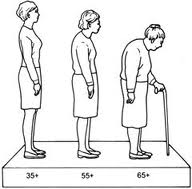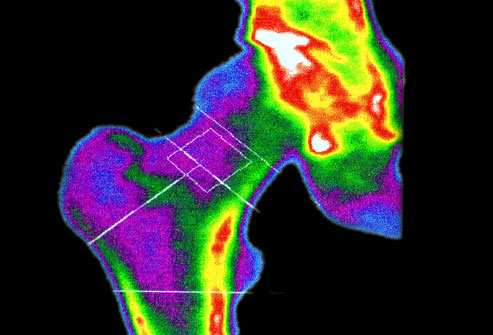“What A Revoltin’ Development This Is !!”
Stanley Feld M.D.,FACP,MACE
President Obama stated that he believes that deficit
spending is harmless. It follows that any amount of deficit spending will do no
harm.
President Obama rhetoric causes him to contradicts
himself.
The Life of Riley, with William
Bendix in the title role as Chester Riley, was a
situation comedy on radio in the 1940s and early black and white television in
the 1950s.
Chester Riley always inserted his exclamation of indignation about a
situation he experienced into in the comedy,
"What a revoltin' development this
is!"
The statement became one of the most famous catchphrases in American popular culture.
Americans find
themselves in a similar situation weekly just as Chester did in the 1950s
In the CBO's analysis of the
president's preliminary 2013 budget, the spending is $3.72
trillion. The CBO predicted that collections will be $2.5 trillion dollars. The
CBO predicted that there will be a $1.22 trillion dollar deficit added to
America’s debt in 2013.
If the economy slows as many predict the projected deficit get
worse.
On February 5, 2013, a day after President Obama missed his budget
due date, the CBO revised its preliminary prediction.
The CBO said the deficit spending for 2013 would be reduced from a
predicted $1.22 trillion to “only” $845 billion dollars without a decrease in
unemployment, a decrease in government spending or an increase in the 1.2%
growth of the economy.
This decrease in deficit spending is a result of the increase in taxes
January 1,2013 to avoid the fiscal cliff.
The reality is that
President Obama is increasing government spending yearly.
“Obama's yearly budgets are record-breaking.
Here's a
summary of a fact-check analysis:
The correct figure to use is the CBO's analysis of the
president's 2013 budget, which clocks in at $3.72
trillion.
So this is what we end up with:
2008: $2.98 trillion
2009: $3.27 trillion
2010: $3.46 trillion
2011: $3.60 trillion
2012: $3.65 trillion
2013: $3.72 trillion”
“Starting in 2008 as the base year and ending
with 2012, the compound annual growth rate for Obama's spending starting in
2009 is 5.2 percent.”
President
Obama's deficit-to- Gross Domestic Product
(GDP) ratio is huge. Democrats and the traditional media complained that George
W. Bush was overspending.
George W.
Bush’s overspending was tame compared to President Obama’s.
“George W. Bush
2001-08 2.0
2002-09 3.4
Average 2.7
Barack Obama
2009-12* 9.1
2010-12 8.7
Average 8.9
*Fiscal 2012 ends Sept. 30, 2012, so this figure
is estimated”.
The median annual income has dropped in the last 4 years under President Obama’s
reign.
“Using constant 2012 dollars (to adjust for
inflation), the median annual income of American households was $53,718 as of
June 2009, the last month of the recession. Now, after 38 months of this
"recovery," it has fallen to $50,678 – a drop of $3,040 per
household.”
The
Senate, controlled by Democrats, voted unanimously against Obama's 2012 and
2013 budget proposals 0-97 and 0-99 respectively. The House of Representatives
voted 0-414.
Both the Senate and the House knew that
continuing deficit spending is economic suicide.
The U.S. government’s economic problems are
never solved by increased regulations.
Regulations costs the government billions of dollars
to write and execute. It also costs businesses additional billions to comply
with new regulations. This spending detracts from investments in economic
growth.
Regulatory costs have skyrocketed during the
Obama administration.
The costs of regulations have more than doubled since
President Clinton’s administration and tripled President George W Bush’s
administration. The present regulatory
costs are almost double the combined costs of Presidents Clinton and Bush.
What does this have to
do with Repairing the Healthcare System?
The massive increases in healthcare regulations
are distorting the physician-patient relationship. They are commoditizing
medical care.
The result is large increases in healthcare
costs for consumers. The increases are occurring long before Obamacare has been
fully implemented.
The administration’s regulations have not
touched on the major causes of the rising costs in the healthcare system. The
top two causes are defensive medicine and the need for tort reform and
effectively challenging the abuse of the healthcare insurance industry.
The short-term effects will be devastating to
the delivery of medical care to patients.
The long-term effects are not being talked
about.
Physicians
are blamed for the rising medical costs. Each year the government threatens
physicians with a 25-30% reduction in reimbursement.
Physicians
collect only 10% of the total healthcare dollars spent. A major question is
what is the rest of the money being spent for?
How
do you measure the value of physicians’ services? Medicare and Medicaid pay
physicians a small percentage of the value for their services.
When
Obamacare is fully implemented payment to physicians will be lower. Physicians
will be responsible for their financial performance and penalized if
performance is poor.
“When people
don't get paid adequately, the quality of their work suffers over the long
haul. The best and brightest would-be doctors won't sign up for medical school when they figure out they
won't get paid enough.”
Another option is that physicians will unionize.
They will hire effective negotiators to be paid their true value.
Obamacare’s hidden taxes are fudging our real
unfunded obligations. The ballooning deficit will slow our economic growth. Millions
will remain unemployed and uninsured.
The Independent Payment Advisory Board's cost-cutting measures will ration medical care. The board will decide what
treatment is worthy of reimbursement not the consumers of
healthcare.
“ Remember
the recent replacement refs for the NFL? The NFL went downhill, and the
fans booed and demanded a change.
Imagine
replacement doctors in our medical care.”
Healthcare consumers are confused and angered
by swiftly rising premiums and high deductibles, according to focus groups in four U.S. cities conducted by researchers for the
Robert Wood Johnson Foundation.
These focus groups were likely to question
physicians’ recommendations and compare costs and quality information just like
shopping for a car or a TV set. They knew their costs “practically down to the
penny.”
Consumers are not stupid!
They are starting to say, as Reilly did on his
weekly sitcom,
“ What a revolting development this is.”
The opinions expressed in the blog “Repairing The Healthcare System” are, mine and mine alone.
Please have a friend subscribe





nursing homes in birmingham
Repairing the Healthcare System: Actions Contradicts Goals